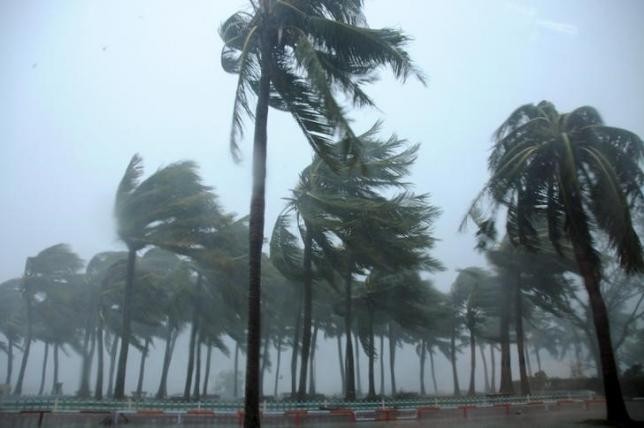At least 19 people were killed and another 223 injured after Typhoon Mujigae battered China’s Guangdong Province on Sunday.
According to a press release issued by Guangdong's civil affairs department on Sunday, seven people died in tornadoes triggered by the typhoon in Guangdong, while another seven died in landslides.
In Zhanjiang, a coastal city southwest of Guangdong where Mujigae first made landfall, one person was found dead in the debris of a house toppled by the rainstorm, while three fishermen were reported to have died in a pair of boat accidents in the stormy sea. Four other fishermen remain missing after the boats sank Sunday.
In the neighboring Guangxi Zhuang Autonomous Region, one person died after he was hit by a tree that was uprooted by strong winds, the regional government said in a press release.
Approximately 3.5 million people in Guangdong and 1.9 million in Guangxi were affected by the typhoon, with economic losses reaching 23.24 billion yuan ($3.65 billion), the state-owned Xinhua News Agency reported on Tuesday citing government data.
According to the China Meteorological Administration, Mujigae hit the coast of Zhanjiang at around 2 p.m. on Sunday with winds of up to 50 meters per second.
"It was a downpour from day to night. All the lights were out and I had to use the flashlight on my cellphone in the evening. I was so afraid that my battery would run out," Huang Mu, a resident from Foshan City, told the China Daily newspaper.
After the typhoon landed, power supply facilities were damaged in parts of Guangdong, Guangxi and Hainan, resulting in a blackout in nearly five million household.
According to China Southern Power Grid (CSG), more than 24,000 power maintenance workers have been deployed to repair the damages. As of Tuesday morning, power supply has been restored in 78 percent of households.
Power supply will fully resume within seven days, CSG deputy general manager Wang Liangyou told Xinhua.
As the typhoon landed during the country's National Day holiday, many tourists were also affected by the storm.
Flights were canceled along China's southern coast, while authorities have closed popular tourist attractions including Weizhou Island in Guangxi, which usually sees thousands of tourists during the holiday season.
In Fangji Island, a popular scenic spot in Maoming City southwest of Guangdong, more than 500 tourists have been stranded by the typhoon, according to city officials.
Guangxi also suspended services of 11 high-speed trains running along the coast on Sunday and canceled train ticket sales until Monday afternoon.



























